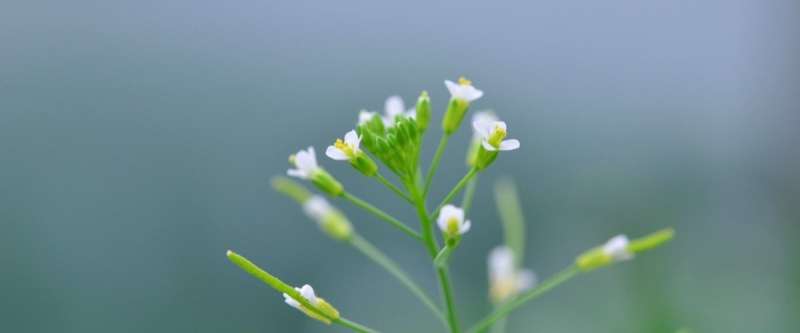Study shows how a gene helps plants manage their protein production in stressful times

The lab of Federica Brandizzi is showing how a gene helps plants adjust protein production during stressful times. The study is in the Proceedings of the National Academy of Sciences.
Proteins are the lifeblood of plants. These molecules come in many shapes and sizes and do a lot of things to keep plants healthy. For example, some carry water up from the roots to nourish the leaves. Others make insecticides to kill pests. There are even proteins that work like alarm systems during dangerous situations.
The expand iconendoplasmic reticulum (ER) is the hub that produces one third of the proteins that keep a plant growing.
It also has to be on standby for emergencies. Say, a caterpillar starts eating a leaf. The plant then asks the ER to ramp up the number of defense proteins.
These special production demands can overwhelm the ER, which still has to continue its routine production. The added stress can lead to defective proteins which can harm and even kill plant cells.
To cope with the stress, plants rely on an alarm signaling system, called the expand iconunfolded protein response (UPR). The UPR protects cells from defective proteins and instructs the ER to produce healthy ones.
We still don't know much about how the UPR works in plants. But understanding it could be a key to breeding plants with enhanced resistance to stresses. The result: improved yields.
"We identified one gene, called NPR1, that reduces the activity of the UPR," says Ya-Shiuan Lai. Ya-Shiuan is the main co-author and a grad student in the Cell & Molecular Biology Program.
When the scientists took the blocking gene out of lab plants, the UPR was more active. The plants were more resistant to stress.
"We think it is harmful for plants to keep an active UPR at all times during stressful situations. It consumes a lot of energy," Ya-Shiuan adds. "That is why plants use these 'negative' regulators, as we call them, to maintain a proper energy balance."
"The gene product changes its structure, depending on the mix of chemicals inside plant cells," Ya-Shiuan adds .
"During stress periods, the gene morphs into a simpler structure that enters the cell nucleus. There, it interacts with the DNA-interacting factors that are responsible for turning on the UPR."
The scientists are still debating how the gene actually blocks the UPR. "Does the gene simply block the system from working? Or does it fuse with it, creating an inactive larger complex?"
The same gene, playing a different role, also helps plants defend against harmful bacteria. "In this case, it doesn't play a blocking role. On the contrary, it supports the making of compounds that fight bacteria," Ya-Shiuan says.
Somehow, the gene's work doesn't seem to bleed over between the 'stress' and the bacterial defense systems. It can confine its activity within the system it is working in.
One reason might be that plants face different stresses that need to be dealt with by separate defense systems. It is helpful for the systems to interact so they keep plants well-protected on the whole.
"I'm thankful for Dr. Brandizzi's support. She helped me keep the faith during the long publishing process," Ya-Shiuan says. "The MSU-DOE Plant Research Laboratory's culture of teamwork was very helpful. Dr. He's lab works on plant bacterial defenses. They helped me interpret the data and progress with my research."
More information: Ya-Shiuan Lai et al. Salicylic acid-independent role of NPR1 is required for protection from proteotoxic stress in the plant endoplasmic reticulum, Proceedings of the National Academy of Sciences (2018). DOI: 10.1073/pnas.1802254115
Journal information: Proceedings of the National Academy of Sciences
Provided by Michigan State University




















